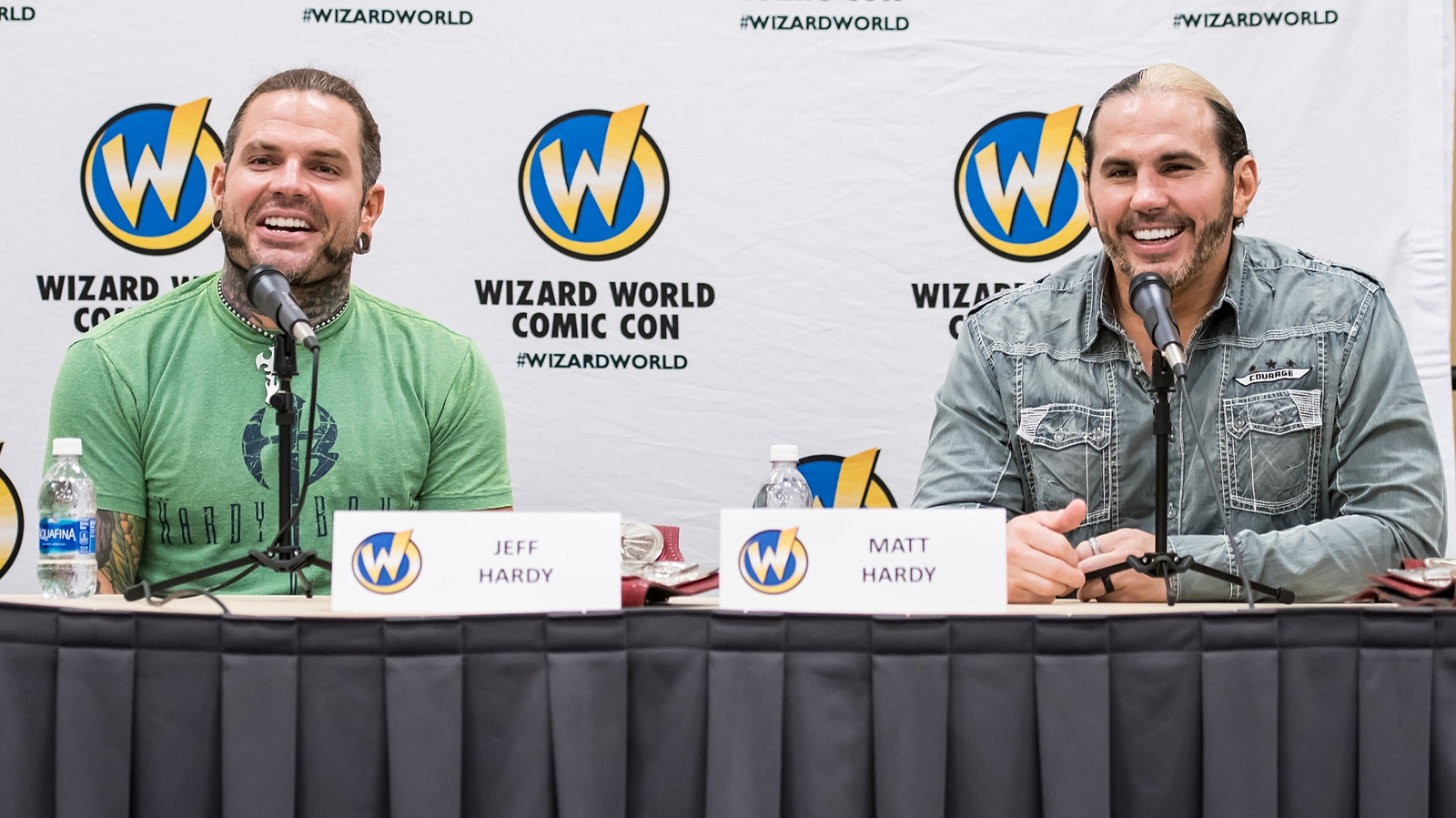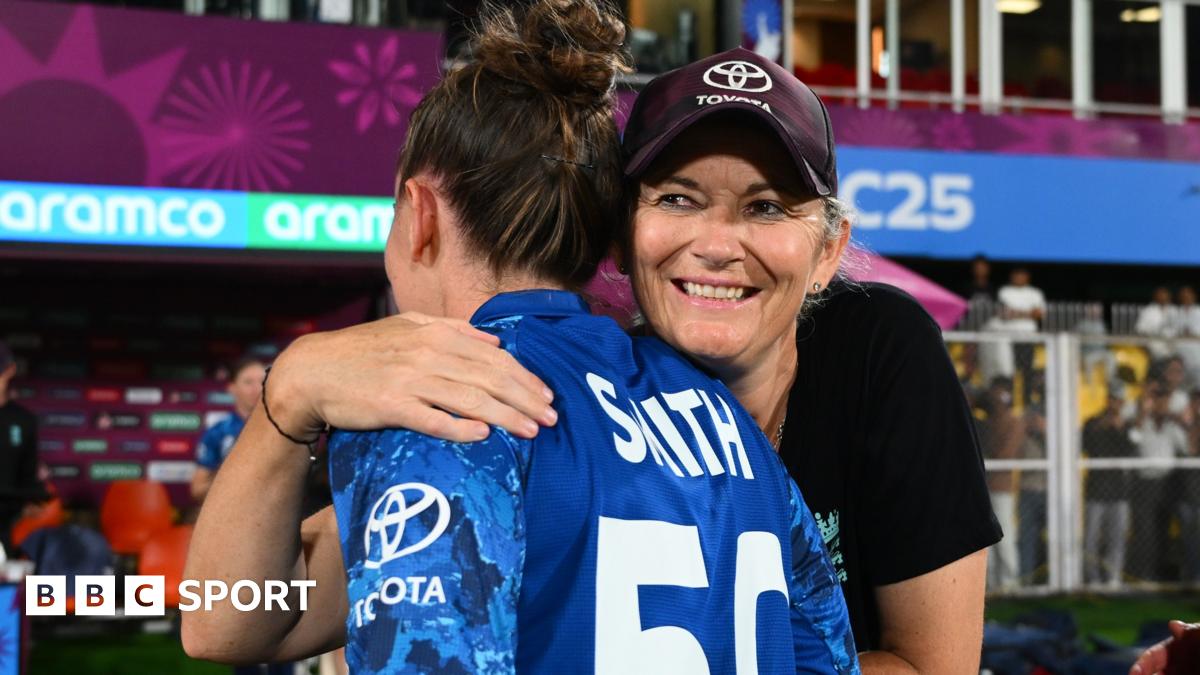
Anthony GharibOct 3, 2025, 08:42 AM ET
SITTING IN A Beverly Hills hotel room during one of multiple media junkets, Dwayne Johnson spent nearly three minutes explaining how he morphed his mind and body into Mark Kerr for "The Smashing Machine" when he turned to the MMA pioneer and asked: "How did I do, by the way?"
Kerr opted for an anecdote. His son, Bryce, saw the film in New York a couple of months ago. He immediately called Kerr afterward and began whispering his thoughts, almost afraid to admit what he had seen.
"'Dad, he walks like you. He looks like you. He talks like you.' It was just [this] whole narrative of the confirmation of his transformation into somebody other than Dwayne Johnson," Kerr told ESPN and other reporters during a media roundtable last month. "It was this, you know, validation of a third party going, 'Oh my gosh, he's like Dad.'"
His son went even further, telling Kerr: "Dad, he's even got your heart."
"Wow, man," Johnson replied. "That's beautiful."
The moment moved Kerr to tears on the phone.
Becoming Mark Kerr, a 6-foot-3, 260-pound former NCAA collegiate wrestling champion turned MMA fighter, included a process unlike any other during Johnson's acting career. A busy start to 2024 with his first WWE match in 11 years bled into a grueling month-long camp for "The Smashing Machine," an A24 production that releases on Friday.
Each day on set required makeup that took three to four hours to complete and 21 prosthetics, courtesy of Academy Award winner Kazu Hiro, to make Johnson look like Kerr. Johnson worked with a voice coach to turn his speech into that of Kerr's, a soft, tender voice.
The result has been a performance that critics have lauded as one of Johnson's best, who looks almost unrecognizable on the big screen.
"I've never worked harder, and we like hard work, it's what we all like to do," Johnson told ESPN during the roundtable. "But man, I had never worked harder for a role."
THE FILM COVERS a similar time period as the 2002 documentary about Kerr called "The Smashing Machine: The Life and Times of Extreme Fighter Mark Kerr." Director Benny Safdie said he had a deep love and respect for the documentary, wanting his film to be in direct conversation with it.
While Safdie looked to write his own love letter to the original work, Johnson had his eyes set on something else.
He met Kerr around 1997 when the wrestler began ascending, and Johnson's career as the Rocky Maivia character struggled to take off in the then World Wrestling Federation. During the late 1990s, Johnson and Kerr witnessed a sudden uptick in deaths of MMA fighters and pro wrestlers from pills and drugs. Both of them knew friends who suffered a similar fate.
"My thought early was just this man [Mark] and Benny, your vision, you'll shoot the film how you want to and I know, I feel it's going to be special. ... But it was really just about Mark," Johnson said. "And I just wanted to write my own love letter to the men who were my friends that I lost. And to [Mark's] as well."
Johnson is a mountain of a man, routinely posting videos on social media from his gym, nicknamed "Iron Paradise." However, Kerr -- who fought in the heavyweight division -- is what Johnson described as "a beast of a man." Therefore, there would be some work to do even for Johnson, whose biceps often explode out of his shirts.
Safdie and Johnson met early on about how the WWE star could transform his body to be like Kerr's.
"And [Benny] said," Johnson explained.
"I love this," Kerr interrupted.
"'I don't know how to say this to you and I don't know if you've ever heard this before, but you're going to have to get bigger ... I don't have the word, it's puffier,'" Johnson said, as Kerr and Safdie broke out into laughter.
Johnson told Safdie to give him 24 hours and that he thinks he knows what the director needs. He came back the next day and told Safdie it looked like he would have to put on 25 to 30 pounds for the role (it was revealed to ESPN that he gained approximately 30 pounds).
Quickly, though, Johnson realized this wouldn't be any ordinary bulk.
Kerr has a "rare one-of-one body," Johnson explained.
"Fast-twitch fibers, that different quality of muscle of a wrestler with a nonstop motor that's always going in, shooting, lifting up," Johnson said. "Just that work, the deltoid and then the traps, the neck, his quads ... to put on that kind of muscle is just different. So that's why I went into an MMA camp, trained with real coaches, real MMA fighters, just to keep my movement."
HIS TRAINING CAMP began in April 2024, a month before production started for the film. Johnson had just concluded a separate 12-week camp for WrestleMania 40 before taking 10 days off and starting training camp for "The Smashing Machine."
The days began with cardio on an empty stomach, followed by a weightlifting session after lunch, and then 15 to 20 minutes of additional cardio. Hopping in the cage for an hour to 90 minutes concluded the work.
He marked his first day of MMA camp with a post on Instagram, calling it a "very humbling, intense and motivating journey into this world of combat and becoming Mark Kerr."
Moments in the cage paid dividends during filming. Safdie told Johnson at the beginning of production that he'd love to never cut away from him during the fight scenes.
"We have a great stunt double, we have two. I'd love to just use you," Johnson recalled Safdie telling him. "And I know what that meant."
Near the end of the movie, while filming a fight scene where the Kerr character fought Kazuyuki Fujita, Johnson indeed took a real punch, explaining that it "felt like when you get rocked by a real fighter multiple times."
The crew had to convince the scene partner, who is a real fighter, to actually punch Johnson. At first, he refused, saying he respected Johnson and wasn't going to do it.
"And I said, 'Look, just don't hit me here [jaw], you'll break my jaw. Don't hit me in my temple, you'll kill me. But if you could hit me here in my cheekbone,' and he goes, 'No, no, no, I'm not going to do that,'" Johnson said.
Safdie walked over and told the scene partner he'd have to hit Johnson because he wasn't going to cut away. It marked one of the more important scenes in the film, recreating a moment from the Pride Grand Prix 2000 Finals where Kerr is on his knees, getting hit by Fujita and unable to fight back, losing the match.
Eventually, the partner punched Johnson, and Safdie later found out that Bas Rutten -- the legendary MMA fighter who played himself in the film -- had been listening to the exchange.
"Bas was just like, 'just hit him. He's The Rock. Hit him,'' Safdie said. "And it was like, whoa, whoa."
The moment highlighted Johnson and the crew's commitment to authenticity. It went as far as how the actor prepared to act like Kerr.
Kerr walks and talks a certain way, Johnson said, and there's a confidence about him that Johnson tried to exude on screen. Johnson prepared by getting to know Kerr as best as he could and understanding "everything that's happening" in Kerr's mind.
The film doesn't only touch on fighting in the cage. Arguments between Kerr and his ex-wife, Dawn Staples, are a key part, with Emily Blunt playing the role of Staples.
Safdie treated those scenes like fights of their own, filming them in sections. He engaged in conversations with Johnson and Blunt, knowing how challenging those emotional moments would be.
"I wanted us to be close because I knew we were going to be going to places that may have been a little bit uncomfortable. And I thought, we need to do that in a place of trust, you know?" Safdie said. "So that was kind of where it was just building that foundation and then moving from there."
Those scenes "hurt" Johnson's heart and offer some of the most emotional moments of his acting career. He called them "raw" and "intense," with Safdie only doing one take because he didn't want the actors to go through them again. Johnson revealed they were "emotionally wrecked" after the final argument scene.
Throughout the film, Johnson drew on hearing his mother and father bickering when he was a kid as inspiration.
"I remember what that was like. My dad [Rocky Johnson] was a pro wrestler. And my mom essentially was that woman who sacrificed her life so she could support her husband," Johnson said. "Like a lot of women do and a lot of men do for their wives, too."
Johnson entered the role with a profound respect for MMA, and exited with something even more -- the ultimate validation for his performance.
So, how did Johnson do?
As Kerr finished explaining the moment with his son, he broke down why it moved him to tears.
"It's just one where, if anybody on the planet can validate [Johnson's performance], it would be my son," he said.
.png)
 German (DE)
German (DE)  English (US)
English (US)  Spanish (ES)
Spanish (ES)  French (FR)
French (FR)  Hindi (IN)
Hindi (IN)  Italian (IT)
Italian (IT)  Russian (RU)
Russian (RU)  2 hours ago
1
2 hours ago
1









Comments